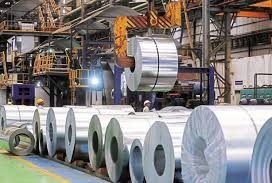Domestic steel prices are showing signs of fatigue after a relentless rally over the past two years following supply disruptions, decarbonization measures globally, especially in China and geopolitical risks stemming from the Russia-Ukraine war, which has driven up raw material costs, according to Crisil Ratings.
While prices have defied correction predictions because of continuing uncertainties, some moderation is on the cards with the onset of monsoon.
Heightened geopolitical risks have limited the correction in prices, which had started to moderate early this year. But the Russia-Ukraine conflict, which began in late February, cranked it up again on supply-disruption fears. In Europe and the US, where the impact was greater, prices crossed the $1,600 per tonne mark.
Then rising input costs added to the pain. Prices of international coking coal (f.o.b. Australia) rose ~47% to $670 per tonne in three weeks from $455 per tonne in late Feb-22, due to the flooding of mines amid high demand from countries that traditionally imported from Russia. While coking coal prices have eased from their peaks, they continue to get support from strong demand at ~$500 per tonne.
All this has kept domestic steel prices elevated. In April, they hit an all-time high of over ~Rs 76,000, which is ~95% over March 2020 levels, when Covid-19 was declared a pandemic.
Hetal Gandhi, director, CRISIL Research said, “Despite a moderation in demand in January-March, steel prices have inched up owing to higher input costs and buoyant exports. Also, domestic supply stayed tight, eliminating the differential between global landed and domestic prices, which was once nearly Rs 15,000 per tonne. On the other hand, export realization premiums have surged to ~$75 per tonne in early May.”
While steel mills made the best use of elevated global prices, domestic demand began to waver. In the first quarter of the current fiscal, domestic demand could see an optical recovery because of a low-base effect, but consumer sentiment remains sluggish with higher input costs leading to postponement of purchases and construction decisions.
Similarly, elevated prices and the resultant inflationary pressure had impacted sentiment across the globe, eventually leading to a price correction. Since April, hot-rolled coil prices have declined over 25% in Europe and the US to $1,150- 1,200 per tonne from a peak of ~$1,600 in mid-March.
Koustav Mazumdar, associate director, CRISIL Research said, “The onset of the weak demand season because of monsoon and less-lucrative exports mean domestic steel prices should begin easing and ultimately move towards Rs 60,000 per tonne by the end of this fiscal. They will, however, continue to hover well above the pre-pandemic levels. Flat steel prices could rise 3-5% this fiscal after surging over 50% last fiscal.”
While exports to these markets from India will remain high in the first quarter of this fiscal, retreating prices will narrow the arbitrage for domestic mills. To sum up, exports out of India will remain range bound at 13-14 million tonne this fiscal on the back of revised quota to Europe and supply constraints in south-east Asia.

